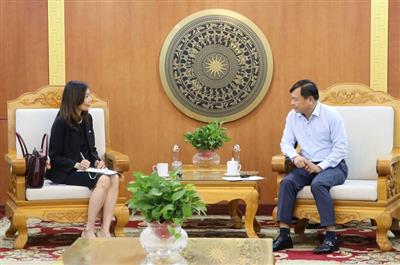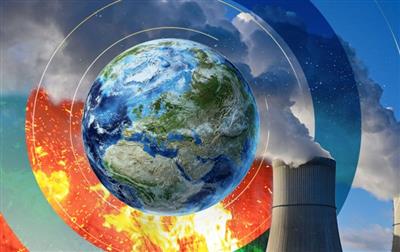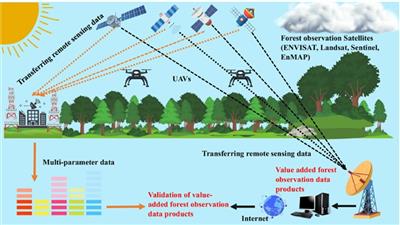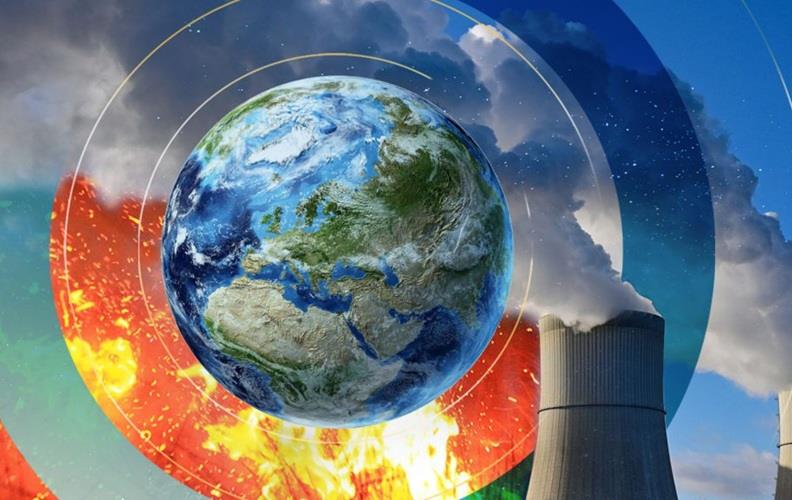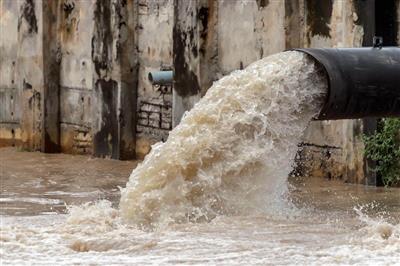
The urgent need for environmentally sustainable and inclusive digitalization strategies
16/07/2024TN&MTIn the past two decades, digitalization has transformed the world with both opportunities and challenges. While digital technologies can address environmental issues, the proliferation of devices, data networks, and resource-intensive applications like AI and blockchain has increased the environmental footprint.

The current linear digital economy—extract, make, use, waste—escalates demands on raw materials, water, energy, emissions, and waste. Addressing these issues requires policy reforms, technological innovations, and collective action from policymakers, businesses, and consumers to promote circular business models, energy-efficient logistics, sustainable packaging, and responsible consumption. The UNCTAD's Digital Economy Report 2024 stresses the urgent need for sustainable and inclusive digitalization strategies, exploring critical issues essential for a balanced digital transformation.
The increasing environmental impact of digitalization
Digital technologies significantly impact the environment. Data centers, essential to the digital economy, consumed approximately 460 terawatt-hours (TWh) of electricity in 2022, equivalent to the power used by 42 million homes in the United States annually. This consumption is expected to double by 2026, highlighting the escalating demand for energy. Bitcoin mining is a prime example of this trend, with its energy consumption increasing 34-fold between 2015 and 2020, reaching around 121 TWh. This amount is more than the annual energy consumption of entire countries like Belgium or Finland.
Additionally, the production and disposal of digital devices generate substantial electronic waste. In 2021, over 50 million metric tons of e-waste were produced, a figure expected to double by 2040. This waste includes harmful materials that pose significant environmental risks if not properly managed. The rapid turnover of digital devices exacerbates this issue, as consumers frequently upgrade to new models, leading to a constant stream of discarded electronics. Addressing the environmental footprint of digitalization requires comprehensive strategies to manage both energy consumption and electronic waste.
The geopolitical challenges arising from critical minerals
The digital economy’s reliance on critical minerals, such as lithium, cobalt, and rare earth elements, poses significant geopolitical risks. These minerals are concentrated in a few countries, with the Democratic Republic of Congo providing over 60% of the world’s cobalt and China dominating 80% of rare earth processing. This concentration creates vulnerabilities in the supply chain, which can lead to global tensions and trade disruptions. The demand for minerals like graphite, lithium, and cobalt could surge by 500% by 2050, according to the World Bank. This heavy concentration of resources in a few countries heightens supply chain vulnerabilities and geopolitical risks.
Developing countries are pivotal in the global supply chain for these critical minerals, which are essential for digital and green technologies. Africa, for instance, holds 55% of the world's cobalt and significant reserves of manganese, graphite, and lithium. This presents both opportunities and challenges for these nations. While there is potential for economic growth and development, there are also risks of environmental degradation and socio-economic inequalities. Ensuring that the extraction and use of these minerals are sustainable and equitable is crucial for global stability and environmental health.
Escalating energy and water consumption in the digital age
The digital era is marked by rising energy and water demands. Data centers, for instance, are projected to consume 8% of the world’s electricity by 2030. Currently, they already account for about 2% of global electricity consumption, a figure comparable to the aviation industry's energy use. The massive energy requirements of these centers stem from the need to power and cool servers continuously. Moreover, Bitcoin mining alone consumes more energy than some countries, underscoring the urgent need for energy-efficient digital solutions.
In addition to energy, water usage is a significant concern. Cooling data centers requires substantial amounts of water, further stressing global water resources. For example, in 2022, Google's data centers and offices consumed 5.6 billion gallons (21.2 million cubic meters) of water, while Microsoft's facilities used 6.4 million cubic meters. This high usage has led to tensions within local communities, particularly in regions already facing water scarcity. Innovative cooling technologies and increased reliance on renewable energy sources are critical to mitigating the environmental impact of the digital economy.
Expanding digital ecological disparities in developing nations
Digital ecological inequalities between developed and developing nations are stark. While 5.4 billion people worldwide use the internet, internet penetration in the least developed countries remains below 20%. This digital divide exacerbates socio-economic disparities, limiting access to education, healthcare, and economic opportunities. Furthermore, developed countries generate significantly more digital waste (3.25 kg per person) compared to developing nations (less than 1 kg per person), highlighting the unequal distribution of digitalization’s benefits.
The surge in e-commerce has also contributed to this divide. Online shoppers have grown from fewer than 100 million in 2000 to 2.3 billion in 2021, leading to a 30% rise in digital-related waste from 2010 to 2022, reaching 10.5 million tonnes globally. Developing countries often lack the infrastructure to manage this waste effectively, resulting in environmental and health hazards. António Guterres, Secretary-General of the United Nations, stated, "Yet many developing countries continue to face obstacles in accessing digital technologies for their development needs, while bearing the brunt of environmental depletion, waste and climate change." Addressing these inequalities requires substantial investments in digital infrastructure, education, and waste management systems to ensure that all countries can benefit from the digital economy sustainably.
Advancing towards a circular and inclusive digital economy globally
Transitioning to a circular economy is essential for sustainable digitalization. This approach involves recycling, reusing, and reducing digital waste. E-commerce growth has led to a 30% rise in digital-related waste from 2010 to 2022, reaching 10.5 million tonnes globally. A circular economy could generate $4.5 trillion in economic benefits by 2030. Strategies include designing products for longevity, improving recycling systems, and investing in renewable energy (UNCTAD).
UNCTAD suggests several measures to foster a circular and inclusive digital economy. These include using circular economy models, optimizing resource use, and strengthening environmental regulations. Additionally, promoting international cooperation is vital to ensure fair access to digital technologies and resources. Rebeca Grynspan, Secretary-General of UNCTAD, emphasized, "We must harness the power of digitalization to advance inclusive and sustainable development, while mitigating its negative environmental impacts." Such strategies not only reduce environmental impacts but also create economic opportunities, especially for developing countries. By adopting these practices, the global community can achieve a win-win scenario where digital growth aligns with environmental sustainability and climate change commitments (UNCTAD).
The Digital Economy Report 2024 by UNCTAD provides a comprehensive framework for achieving environmentally sustainable and inclusive digitalization. Addressing the environmental impacts, geopolitical challenges, resource demands, and inequalities associated with digitalization is crucial for a balanced and equitable digital future. António Guterres, Secretary-General of the United Nations, highlighted, "We cannot address digitalization and environmental sustainability in silos. This report calls for more comprehensive data on the environmental impact of digitalization, and digital policy frameworks that advance the Sustainable Development Goals and honour climate commitments." Policymakers, industry leaders, and international organizations must collaborate to implement these strategies effectively.
Ngoc Huyen (UNCTAD)





